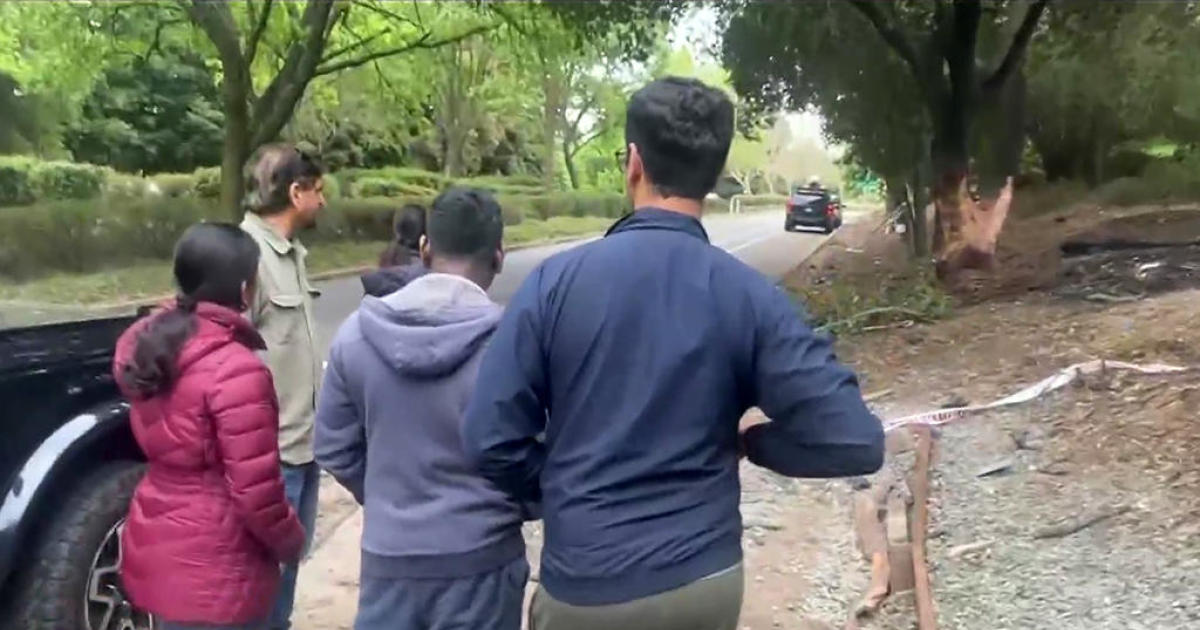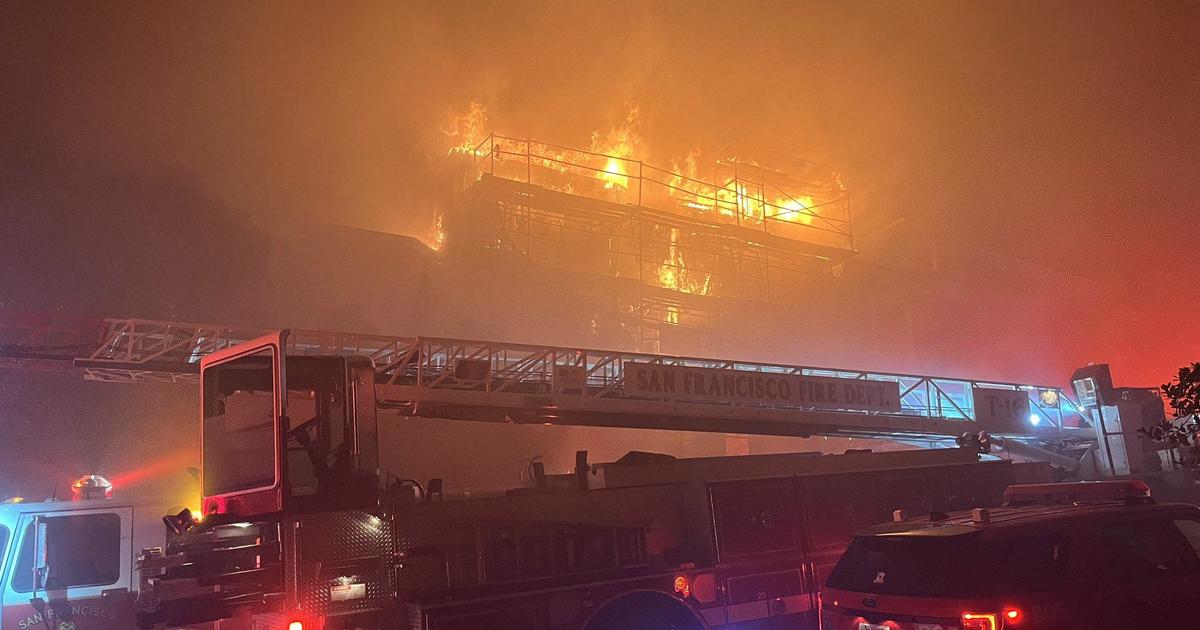Korean Passenger Plane Crashes At SFO; 2 Dead, 182 Injured
SAN FRANCISCO (KCBS/KPIX 5) -- An Asiana Airlines Boeing 777 crashed and burned upon arrival at San Francisco International Airport on Saturday, killing two people and injuring 182 others.
The deadly crash happened around 11:30 a.m. Saturday on runway 28 behind Terminal 2 - the international terminal, according to the Federal Aviation Administration.
Continuing Coverage of Asiana Flight 214 | Listen LIVE: KCBS Coverage | Photo Gallery: Plane Crash at SFO
"It's miraculous we survived," said a visibly shaken Vedpal Singh, who was sitting in the middle of the aircraft and survived the crash with his family. "I'm really thankful to God, things could've been much worse," he told KPIX 5.
Based on numbers provided by the San Francisco Fire Dept. and regional hospital officials, two people died and 182 others were taken to hospitals - including 49 who were seriously injured, ten of them critically including two small children. While some passengers were initially unaccounted for, by evening all had been located.
The wounded were transported to nine hospitals across San Francisco, San Mateo and Santa Clara counties. Victims' injuries included burns, broken bones and internal injuries.
The plane that crashed was Flight 214 from Seoul, South Korea, initially said to be a cargo plane - but later was identified as a passenger jet.
The airline said 291 passengers were on board, including a group of vacationing Korean school children, along with a crew of 16. Most of those on-board were Chinese, Korean or U.S. citizens.
Samsung executive David Eun was among those on the plane, tweeting: "I just crash landed at SFO. Tail ripped off. I'm ok. Surreal."
Also aboard was Silicon Valley businessman Ben Levy, who helped dozens of others off the plane while suffering from broken ribs in the crash. He was seated in seat 30K in the emergency exit row behind the wings of the aircraft.
"It was like a Six Flags show," he told KPIX 5, comparing the events leading up to crash to a wild amusement park ride.
The crash happened as the jet was landing following a roughly 10 1/2 hour flight. Two passengers on the plane relayed to a San Carlos relative by cell phone that the pilot appeared to be landing short of the runway. Other observers reported the plane had problems on approach at approximately 140 knots and clipped a wing on a rock retaining wall.
Witnesses said they heard a loud noise, saw the tail came apart from the plane, and then watched as a fireball and cloud of black smoke shot into the sky, visible for miles.
"The plane started coming in at an odd angle, there was a huge bang and you could see the cloud of huge black smoke," observed Kate Belding, who told KCBS she was jogging near the airport at the time of the crash.
"It was a horrible thud," explained Kelly Thompson, who told KCBS she saw it unfold from the parking lot of the Westin hotel at the airport. "The airliner bounced and then slid to a stop on the runway."
Nearly 200 firefighters from the San Francisco and San Mateo departments were on the scene immediately afterwards, using foam to put out the fire and undertaking a major triage operation. Eyewitnesses at the airport saw passengers evacuated by emergency slides from the plane moments after the crash.
Video footage from Chopper 5 showed the top of the fuselage was burned away and the entire tail was gone. One of the two engines appeared to have broken away. Pieces of the tail were strewn about the runway. Emergency responders could be seen walking inside the burned-out wreckage.
The airport was closed and no flights were allowed in or out of SFO for several hours after the crash. Two runways eventually re-opened, but many flights were diverted to the international airports in Oakland, San Jose, Sacramento, Seattle and Los Angeles.
The National Transportation Safety Board said it was sending a team of investigators to SFO to probe the cause of the crash. President Obama, at the White House, issued a statement praising first responders and said the nation's thoughts and prayers were with those impacted by the tragedy.
CBS News quoted federal aviation officials as saying it was possible that a micro-burst of wind may have been responsible for bringing the plane down, although the airport weather conditions were described as being good at the time.
Capt. Chesley 'Sully' Sullenberger, the famed Bay Area pilot who landed the 'Miracle on the Hudson' flight, told KCBS it was possible that on-going construction at the airport might have been a factor impacting runways at the facility.
He also said a near-by United Airlines 747 crew may have had the best vantage point - "a front row seat" - to the crash to share with investigators. Sullenberger, an aviation safety expert, said air traffic control tapes indicated the United flight was "holding short" to use that same runway next.
Arnold Barnett, an aviation expert at MIT, told KCBS it was possible the plane could have experienced a power shortage that caused pilots to lose control. He said a similar incident happened involving a Boeing 777 at London's Heathrow Airport in 2008 that injured 49 people.
The Boeing 777 is a smaller, wide-body jet that can travel long distances without refueling and is typically used for long flights over water. The twin-engine aircraft is one of the world's more popular long-distance planes, debuting in 1995. The plane that crashed Saturday was seven years old, delivered to Asiana in March 2006, according to an online database.
Although airport authorities referred to the crash site as a "crime scene" and the FBI took charge of securing the wreckage, San Francisco's FBI Special Agent-in-charge Dave Johnson told a news conference that "there is no indication of terrorism."
(Copyright 2013 by CBS San Francisco. All Rights Reserved. This material may not be published, broadcast, rewritten, or redistributed.)



